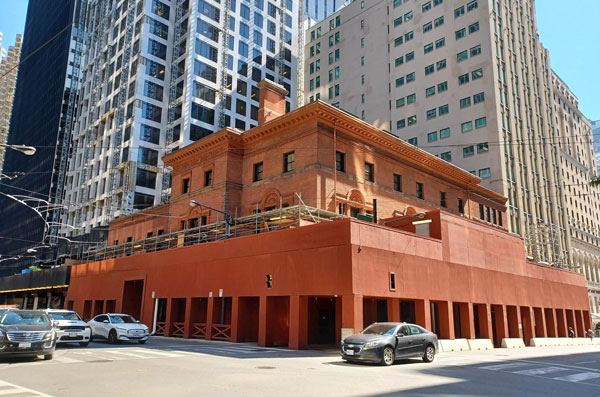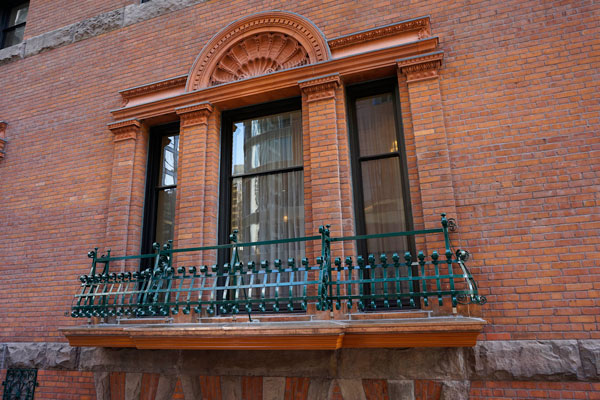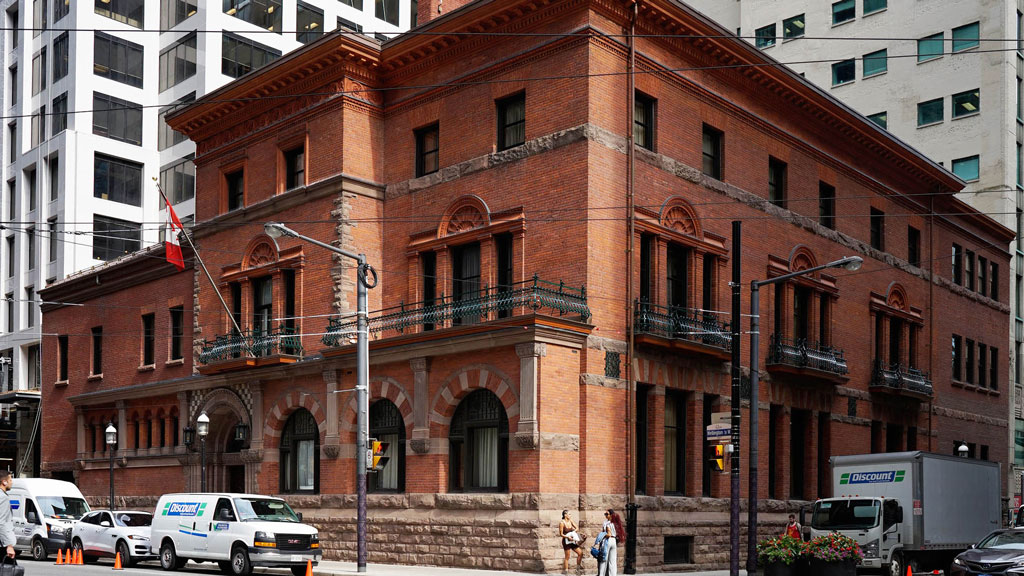The construction industry is always looking for strategies to speed up work but there’s one sub-sector where meticulous attention to detail and painstaking artisanry will always be called for.
The restoration of Toronto’s oldest club, the Toronto Club, by a team of nine firms led by Spencer Higgins took four years with each step by necessity only taken when the previous one was complete.
Higgins, principal of Spencer R. Higgins, Architect Incorporated, described how repairing and restoring cracked brickwork, broken slate, rotten outriggers and corroded tin, often located in different parts of the structure and requiring sequential attention, can’t be rushed.
“It’s been freshened up, but it doesn’t look actually all that much different from when we started,” said Higgins, a 30-year veteran of the sector.
“But if you started looking closely there are many, many changes.
“We’re very proud of what was done and the club is very, very pleased with the final project.”
The club, located at 107 Wellington St. W. at York Street, was built in 1889 with design in an Italian Renaissance style by the legendary Frank Darling. Higgins said “the original work was quite good” but in recent times many elements had begun to fail with age.
Higgins was brought in to stabilize the walls and cornice, improve roof drainage, restore lost details of ironwork, restore the slate roof and chimney caps and re-establish original colour esthetics.
Offering an example of how a job can be drawn out even in experienced hands, Higgins described how there was a painted galvanized iron cornice on a wood frame. After 130 years, it was finished, he said. There was water leaking in from the broken slate roof and corrosion of the backside of the tin. So the team had to remove the entire cornice and replace it with a new copper cornice.
“And of course taking it off you discover that a percentage of the outriggers are rotten. They’re not properly secured,” Higgins said. “So we ended up reinforcing all the wooden outriggers that hold the cornice and that was a big job in itself.
“I mean God, they were there for months doing that. Every one was bolted on and connected or pushed into the wall and replaced, so it was a major, major job. A huge carpentry effort went into just building the framework for the cornice.”

Preparatory works for the job, including excavations, underground repairs and erecting significant scaffolding and service infrastructure, took almost two years, and the restoration itself required two more years, ending in December 2021.
“There were some changes obviously as the work went along, but it generally went as planned,” said Higgins. “It just took forever, it was a big job. Everything had to be done one after the other.”
Other elements of the work included fitting the attic parapet walls with seismic reinforcement; removing terra-cotta window lintels and fitting them with internal reinforcement; and rebuilding chimney stacks using lime mortar and seismically reinforcing them using custom bullnose brick and sandstone caps.
All the masonry was cleaned using high-temperature steam and chemical treatment.
As part of repointing the brickwork, the team had to identify and match the original purple-hued Hematite pigment of the existing mortar.

Team members included Spencer R. Higgins Architect as the heritage architect, Tacoma Engineering as structural engineer, ArconTEST as architectural conservator, Clifford Restoration as construction manager and masonry restorer, Heather & Little doing sheet metal roofing, Traditional Cut Stone Limited undertaking stone fabrication, Miranda Craft Roofing doing slate roofing, Twins Painting in charge of cornice painting, and Jet Welding doing ironwork and metal finishes.
Higgins has done numerous large institutional jobs such as the Saskatchewan legislature building, the Peace Tower in Ottawa and the Ontario legislative building and has broad knowledge of how to source materials but every job is different, including the Toronto Club. The right slate was hard to find with a supplier finally located in Vermont. The stones used in the chimney caps were huge and had to be brought in from the U.K.
As for Credit Valley sandstone, Higgins reached over to Wales, where there was a similar geological formation.
The project was nominated for a Heritage Toronto Built Heritage Award this year in the Heritage Planning and Architecture category but lost out to Massey Hall.
Follow the author on Twitter @DonWall_DCN



Recent Comments